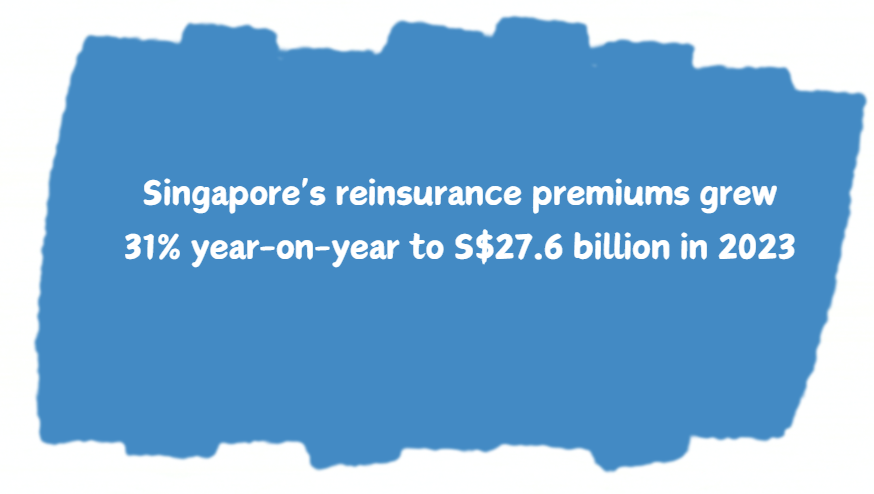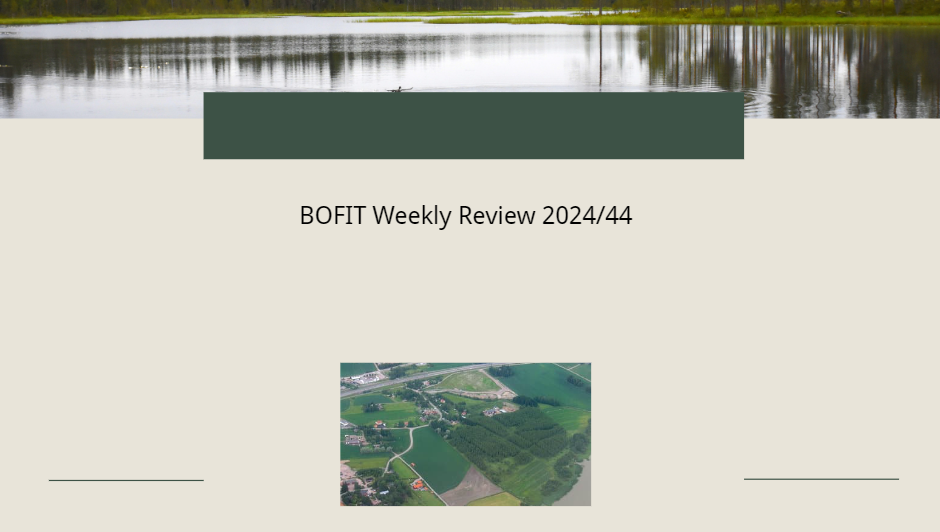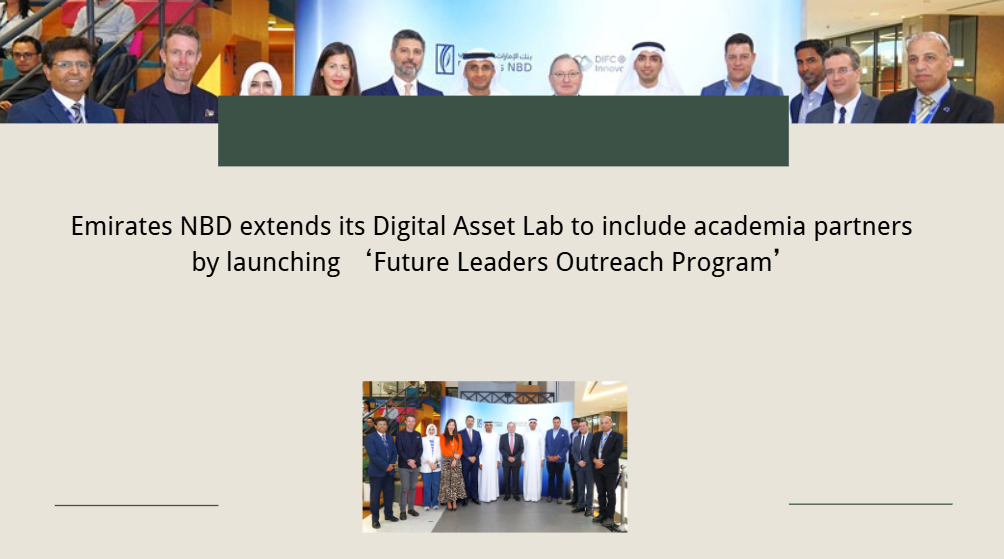Driving Asia's Growth - The Role of Reinsurance in Sustainable Development
Mr Marc Haushofer, Chair of the 20th SIRC Organising Committee
Distinguished guests,
Ladies and gentlemen,
Introduction
1. Good afternoon.
2. Let me start by congratulating the Singapore Reinsurers Association for the 20th anniversary of its flagship event, the Singapore International Reinsurance Conference (SIRC).
a. Since its inception in 1991, the SIRC has grown into a leading forum for reinsurers, insurers and reinsurance brokers to discuss topical issues facing the global reinsurance industry, and as a networking platform for reinsurance deals. b. Today, we have about 3,300 delegates gathered here from over 65 countries, including a strong bench of global and regional leaders.
b. Today, we have about 3,300 delegates gathered here from over 65 countries, including a strong bench of global and regional leaders.
3. This year's strong turnout reflects the strength of Singapore's insurance industry.
a. Gross premiums for general insurance grew 7.5% year-on-year to reach S$13.5 billion in 2023.
b. Brokerage revenues increased by 9% year-on-year to S$847 million.
c. At the same time, Singapore's reinsurance premiums grew 31% year-on-year to S$27.6 billion in 2023, accounting for about 21% of Asia's reinsurance market.
4. This comes on the back of a resilient global reinsurance industry.
a. Global reinsurance capital has grown by 3.7% since end 2023 to reach a new high of US$695 billion in the first half of 2024, a level not seen since 2021.[1]
b. This was driven by retained earnings, more disciplined underwriting, and improved investment performance.
c. The industry has returned to profitability, with reinsurers’ return on equity reaching 17.6% in the first half of 2024.[2]
5. This puts the reinsurance industry in a strong position to support the growth of Asia, as it navigates four key transitions in the years ahead – namely, climate, energy, digital, and demographic.
Climate transition
6. I will start with the climate transition. This is something which the insurance industry is familiar with, given its traditional role in providing natural catastrophe insurance coverage.
7. It is not so much that climate change is happening, but the pace at which it is accelerating which is of increasing concern. This is in turn challenging risk projections based off historical data.
a. In the past five years, annual insured losses from natural catastrophes averaged US$106 billion, up from less than US$83 billion in the previous five-year period.[3]
b. Latest models indicate the insurance industry needs to be prepared for an average annual insured loss of US$151 billion, or higher.[4]
8. Asia is particularly vulnerable to the effects of climate change. It also suffers from a significant protection gap, particularly in terms of catastrophe coverage.
a. Total economic losses in the Asia-Pacific region for 2023 amounted to US$65 billion, of which 91% was not insured. This compares with a 30% protection gap in the United States.[5]
b. Based on the current trajectory, global temperatures are expected to increase by about 2.5 degrees Celsius above pre-industrial levels without more aggressive actions. Under this scenario, Asia could lose about 20% of its GDP by 2048 from 2021 levels, whilst ASEAN collectively could lose about 29% of its GDP.[6]
9. There is therefore both an imminent need and opportunity for the insurance industry to address the underinsurance gap arising from climate change, even as the world scrambles to mitigate the global impact of climate change.
a. To do so, the industry will need to work closely with governments, academia and technology providers, to enhance its risk models, scenario analysis and data on the physical impact of climate change in Asia.
b. I therefore encourage the insurance industry to tap on Singapore’s growing applied climate risk research ecosystem.
i. Singapore has close to 10 institutions[7] which provide research and insights on the physical impact of climate risk and related issues in the region, such as sea level rise, extreme weather events, climate impact modelling, and nature-based solutions.
ii. Insurers, risk modelling firms, and brokers can leverage the work of these institutions as a foundation to layer on economic impact assessments, data and risk models, and hence enhance their assessments, disclosures and portfolio risk management strategies.
c. With these analyses, the industry can also better advise clients how to reduce their risk – for example, manufacturers could raise their factory floor, install flood barriers or elevate critical machinery above base flood elevation, in anticipation of frequent flooding as a result of sea level rising.
d. In turn, this will enable the industry to offer tailored products to provide sustainably priced, effective insurance coverage against natural catastrophes over the longer term.
Energy Transition
10. Let me move on to the energy transition.
11. Unlocking renewable sources of energy is key to enabling Asia to grow its economies while transitioning towards net-zero.
a. Asia accounts for half of global greenhouse gas emissions, as most of its energy needs today are being met through fossil fuels, including coal.
b. Moreover, much of Asia is developing, and its energy needs are still rising.
c. It is critical that we catalyse investments into renewable energy generation and transmission.
i. In fact, investments in renewable energy generation in Asia Pacific are poised to double during the current decade to US$1.3 trillion by 2030.[8]
1. This comprises a sizeable pipeline of renewable energy infrastructure projects, including solar, hydropower and wind.
ii. To enhance electricity connectivity within ASEAN, the International Energy Agency estimates that an overall grid investment of about $21 billion annually is needed from 2026 to 2030 and a further $31 billion annually from 2031 to 2035[9].
12. Amidst the energy transition, there are opportunities for specialty insurers and reinsurers to step up risk financing and insurance solutions for renewable energy and decarbonisation technologies.
a. It is estimated that Asia Pacific will account for a quarter, or US$59 billion of cumulative global renewable energy insurance premiums between 2022 and 2035.[10]
13. Yet compared to natural catastrophe insurance, there is less historical track record of risk assessment and loss profiles for renewable energy development in Asia.
a. Such projects will also be exposed to risks from potential damage from physical elements, such as heavy winds and storms, as well as the additional risk arising from the integration of energy storage systems with renewables.
b. To bridge these gaps, the industry must work closely with the renewable energy sector to develop new risk assessment frameworks, risk engineering methodologies, and sector-specific solutions.
c. This will improve the financial viability, risk management, and resilience of renewable energy and decarbonisation projects in the region.
14. There is also room to deploy solutions such as parametric insurance covers, as well as pre- Final Investment Decision, or pre-FID, insurance solutions[11], such as technology performance guarantees[12] and counter-party credit covers[13].
a. Parametric insurance covers can address specific coverage needs which may not be supported by traditional insurance, given the highly customisable nature.
i. MAS is studying ways to support the growth of parametric insurance, including through research on the regulatory treatment of such solutions in the region as well as information on independent and reliable data resources.
b. I encourage the industry to study pre-FID stage insurance solutions for projects in Asia, especially where projects are facing uncertainties.
i. This is a nascent space in the region, and there is room for the industry to innovate and pilot solutions offering protection during critical early stages of project development.
15. Insurers can also support the energy transition by investing directly in green infrastructure.
a. In fact, insurers are some of the world’s largest institutional investors, holding more than US$40 trillion in assets.[14] In the Asia-Pacific, insurance assets are estimated to be about US$10 trillion.[15]
b. The long duration of infrastructure investments makes such assets a good match for the long-term liabilities of say life insurers.
c. To facilitate greater allocation of assets to infrastructure, MAS had recently issued a public consultation proposing a differentiated capital treatment for infrastructure assets that meet certain criteria to enjoy diversification benefits or lower risk charges than other debt and equity assets.
d. MAS will also be piloting a differentiated risk capital treatment for insurers' investments in environmentally sustainable infrastructure.
i. This allows insurers in Singapore to build their experience and capabilities in investing in sustainable infrastructure assets, and to gain deeper exposure to such assets.
ii. We will share more details of this pilot soon.
16. Taken together, these moves can potentially unlock Asia's sizable infrastructure investment gap, which is estimated at US$815 billion annually.[16]
Digital transition
17. I will touch on the digital transition next.
18. By 2030, the digital economy in the Asia-Pacific is expected to reach $2 trillion or more, driven by factors such as –
a. The boom in e-commerce, especially in countries such as China, India, Indonesia and Vietnam;
b. Innovations in fintech, especially digital payments; and
c. AI and cloud services, as businesses invest in these technologies to drive innovation.
19. At the same time, the risks associated with cyber threats will also increase. This will in turn drive the demand for the cyber insurance market in Asia.
a. The Asia-Pacific cyber insurance market is estimated to double from 2023 to 2027[17], as companies seek coverage for data breaches, ransomware attacks, and other cyber threats.
b. Reinsurers are developing more sophisticated cyber risk models to address this evolving threat.
i. For example, we have seen the industry develop dynamic cyber risk underwriting based on monitoring platforms making real-time risk assessments.
c. In tandem, I urge the industry to work with businesses and consumers to put in place robust cybersecurity measures.
i. Such ex-ante mitigation can help insurers better manage cyber risks, while encouraging businesses to adopt best-in-class systems and practices from the get-go.
Demographic transitions
20. Last but not least, the changing demographics in Asia – in particular, a combination of ageing populations, urbanisation, and increasing wealth – will fuel the demand for life and health reinsurance.
a. Many countries in Asia, such as China, Japan and South Korea, are experiencing rapidly aging populations. Singapore is no exception – we project to attain ‘super-aged’ status by 2026, with about one fifth of our population aged 65 years or older.
b. At the same time, life expectancy is expected to increase. This will drive demand for long-term healthcare, pensions and financial products that provide security in old age.
c. Likewise, the rise of the middle class in Asia, coupled with greater urbanisation, will fuel greater demand for life insurance, health insurance and savings-related products.
d. These trends will give rise to growing liabilities, and reinsurers can share the risk associated with longer lifespans and rising medical costs.
e. The rise of digital platforms and insurance technology – or InsurTech – will also increase the reach of insurers. This expansion in coverage will lead to a higher volume of complex risk, and therefore the opportunity for reinsurance to manage the risk portfolio.
f. Asia accounts for 39% of the global life market, and is expected to grow by over 5% annually over the next decade, outpacing the global average[18].
Growing Singapore as Asia's leading reinsurance hub
21. I have outlined four transitions in Asia that will drive the demand for reinsurance – climate; energy; digital; and demographics.
22. Amidst this demand growth, we will reinforce Singapore as Asia's leading reinsurance hub.
23. First, we will double down on developing a marketplace of insurers and reinsurers.
a. Today, Singapore serves as the Asia-Pacific hub for 12 top global insurers and reinsurers.
b. Among reinsurers alone, 16 of the top 25 reinsurers in the world have made Singapore their regional hub, covering not just ASEAN, but also markets in North and South Asia and even Australia.
c. We also have a well-developed network of about 150 brokers in Singapore today.
d. We encourage insurers to expand their presence in Singapore –
i. By leveraging our concentration of underwriting expertise here, including in complex property, casualty and specialty lines; and
ii. By building on the databases and models available, such as on climate change that I had spoken about earlier.
e. By strengthening our ecosystem of insurers, reinsurers and brokers, we can position Singapore as the hub for the development of risk financing solutions for Asia.
24. Second, we will work with insurers and reinsurers in Singapore to deepen their capabilities, in particular in AI.
a. There is good potential for the insurance industry to harness AI to improve productivity, customer service, and core operations including underwriting, actuarial analysis, and claims processing.
i. For example, it is estimated that generative AI can boost the insurance industry’s revenues by 20% and cut their costs by 15%.[19]
b. To support the scaling of AI with confidence, Singapore is developing a strong foundation of AI governance that balances the need for innovation with the responsible use of AI.
i. In this regard, MAS is working in partnership with leading insurers here under Project MindForge to develop a risk framework for the responsible use of GenAI for insurance use cases, including in AI-assisted underwriting and customer engagement.
ii. MAS will also be issuing a set of good practices next year for addressing AI model, technology and cyber risks.
c. In tandem, we must build up our talent pool to harness the potential of AI.
i. MAS and the Institute of Banking and Finance have commissioned a Jobs Transformation Map study on how GenAI will change job roles in the financial sector, and to identify the new skillsets needed. We will publish the findings and recommendations early next year.
d. I encourage the insurance industry to tap on the guidance and support available to develop and deepen your AI capabilities.
25. Third, we will continue to expand insurance capacity through alternative risk transfer instruments.
a. One such example is sovereign insurance solutions.
i. Singapore is part of the Southeast Asia Disaster Risk Insurance Facility (or SEA-DRIF), an ASEAN+3 initiative in partnership with the World Bank to provide climate and disaster risk insurance solutions for the region.
ii. SEADRIF has made US$4.5 million in payouts to support flood response in Laos, including a US$3 million payout in September 2024 following Typhoon Yagi.
b. Another example is insurance-linked securities (ILS).
i. Singapore is supporting the development of ILS markets in Asia to unlock additional risk financing capacity for peak catastrophe risks.
1. Of the 28 catastrophe bond issuances[20] in Singapore over the past 5 years, 13 issuances have covered perils in Asia, providing US$1.6 billion in coverage.
2. Whilst this is a good start, Asia currently accounts for less than 5% of the global catastrophe bond market.
ii. With their strong credit rating, good in-country relationships and sovereign support programmes, multilateral development banks can bring scale to ILS issuances in Asia by partnering sovereigns on programmatic issuances.
1. For example, they can provide a ready platform from which to issue catastrophe bonds, offering faster time to market and cost savings compared to individual countries building issuance capabilities on their own.
iii. There is opportunity to channel some of the growing flow of investments from private wealth and institutional investors in Asia towards ILS – and to this end, MAS is partnering with the ILS industry to promote ILS as an asset class for private wealth and investment portfolios.
c. Through such alternative risk transfer instruments, we can unlock additional risk financing capacity, and complement that provided by traditional insurers and reinsurers.
Conclusion
26. Let me conclude. As Asia undergoes four fundamental transitions in the years ahead, there are opportunities for the reinsurance industry to play a key role in its growth and development, to insure a dynamic, sustainable and resilient Asia.
27. Through strengthening our insurance ecosystem, deepening capabilities, including in AI, and developing alternative risk transfer markets in Asia, we will reinforce Singapore as Asia's leading reinsurance hub.
28. I wish you a fruitful conference ahead. Thank you.
***
[1] Aon Ultimate Guide to the Reinsurance Renewal (Sep 2024)
[2] Aon Ultimate Guide to the Reinsurance Renewal (Sep 2024)
[3] Verisk 2024 Global Modeled Catastrophe Losses Report
[4] Verisk 2024 Global Modeled Catastrophe Losses Report
[5] Aon 2024 Climate and Catastrophe Insight Report
[6]https://www.swissre.com/risk-knowledge/mitigating-climate-risk/economics-of-climate-change-impacts-for-asia.html
[7] For reference, there are 9 institutions, namely: i) NTU Earth Observatory of Singapore, ii) NTU Institute of Catastrophe Risk Management, iii) Centre for Climate Research Singapore, iv) NUS Centre for Nature-based Climate Solutions, v) NUS Centre for Hazards Research, vi) NUS Centre for Environmental Resilience, vii) NUS Coastal Protection and Flood Resilience Institute, viii) Singapore Green Finance Centre, and ix) SIT Mangrove Conservatory.
[8] Zero Carbon Analytics Report – A driving force: Asia’s energy transition
[9]https://www.weforum.org/agenda/2024/07/south-east-asia-energy-transition/
[10]https://insuranceasianews.com/apac-renewables-to-generate-us59bn-of-premium-by-2035-swiss-re-report/
[11] Pre-FID insurance solutions are risk transfer mechanisms designed to protect investors and project developers against specific risks in the early stages of large-scale projects, before the final investment decision is made. These solutions help mitigate uncertainties and facilitate investment in complex infrastructure or energy projects.
[12] Technology performance guarantee is an insurance solution that protects debt and equity investment by providing coverage in the event of technology or system underperformance. It offers payouts if underperformance leads to a default event, either post commercial operations date or over the debt tenor.
[13] Counter-party credit cover is an insurance product used by clean energy investors, developers and financiers to ensure principal and interest payments are met in the event of an off-taker default or insolvency.
[14] Global Insurance Market Report 2023
[15]https://www.cerulli.com/webinars/institutional-and-insurance-asset-management-trends-in-asia
[16]https://www.imf.org/en/Blogs/Articles/2024/01/29/explainer-how-asia-can-unlock-800-billion-of-climate-financing
[17] Marsh McLennan and Zurich Insurance Group, Closing the cyber risk protection gap (Sep 2024)
[18] Allianz Global Insurance Report 2024
[19] Bain and Company 2024: https://www.bain.com/about/media-center/press-releases/2024/$50-billion-opportunity-emerges-for-insurers-worldwide-from-generative-ais-potential-to-boost-revenues-and-take-out-costs
[20] Catastrophe bonds are financial instruments designed to transfer specific risks, typically related to natural disasters or catastrophic events, from insurers or reinsurers to capital market investors. The issuer receives protection against predefined catastrophic events, while investors receive interest payments and risk losing their principal if the specified catastrophe occurs. These issuances allow insurers and reinsurers to access additional capital and transfer peak risks, while offering investors a chance to diversify their portfolios with returns uncorrelated to traditional financial markets.






















































First, please LoginComment After ~